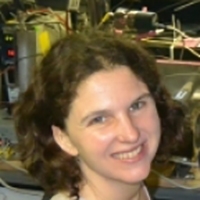
Curriculum Vitae
rstanle2@wellesley.edu
(781) 283-3122
Chemistry
B.S., Ph.D, Massachusetts Institute of Technology
SCI-395
Rachel H. R. Stanley
Frost Associate Professor in Environmental Science; Associate Professor of ChemistryResearch on inorganic environmental chemistry, especially gas tracers and climate change. Teaching includes inorganic, introductory, and aquatic chemistry.
My research focuses on environmental inorganic chemistry. To that end, I use inorganic chemicals as tracers of chemical, biological, and physical processes occurring primarily in the ocean. The tracers I study in particular are the noble gases and the triple isotopic composition of oxygen. The noble gases are biologically and chemically inert and have a large range of physicochemical properties, making them a powerful tool for quantifying physical processes such as air-sea gas exchange. Triple oxygen isotopes are innovative tracers for quantifying rates of photosynthesis and respiration in environmental systems. With these chemical tools, I investigate the global carbon cycle, paying special attention to coastal and upper ocean processes. I have worked in many environments, ranging from a local salt marsh to the Arctic Ocean to the equatorial Pacific.
I am particularly interested in instrument development. I love working with mass spectrometers, coaxing them to make measurements that previously have not been able to be made. I find the scientific method can be practiced in a nutshell when working on instrument development – I develop a hypothesis on how we might be able to analyze a compound; I invent a method capitalizing on the hypothesis; and I test whether the method works. Whether it does or does not, I learn something about chemistry and the world. Once methods are perfected, I enjoy collecting samples in the field, analyzing the samples in the lab (or in some cases I bring mass spectrometers directly to the field), and then quantitatively interpreting the data in order to answer scientifically interesting and societally relevant problems.
I teach classes in introductory chemistry and inorganic chemistry. I strive to awaken curiosity in my students in order to make them want to learn about science because they are inquisitive about how the world functions and about reactions we often cannot see but which affect almost everything around us. I seek to make my students able to truly understand concepts, be able to explain the concepts in their own words, and be able to then apply them to new problems. And I want my students to develop a chemical intuition, which includes both an almost instinctive feeling for whether the answers they propose are reasonable and the power of predicting what will happen to a chemical species in many different situations. My two favorite parts of my job are (1) figuring out how something works – whether it is a facet of the carbon cycle, a piece of a mass spectrometer, or a line of Matlab code and (2) teaching and hopefully inspiring others inside the classroom and the lab.
I enjoy spending time with my family, which consists of two young daughters, my husband, and a dog. We spend lots of time together playing, reading (even the dog enjoys hearing books), and cooking.
For more information on my research, please visit the Stanley lab website.
